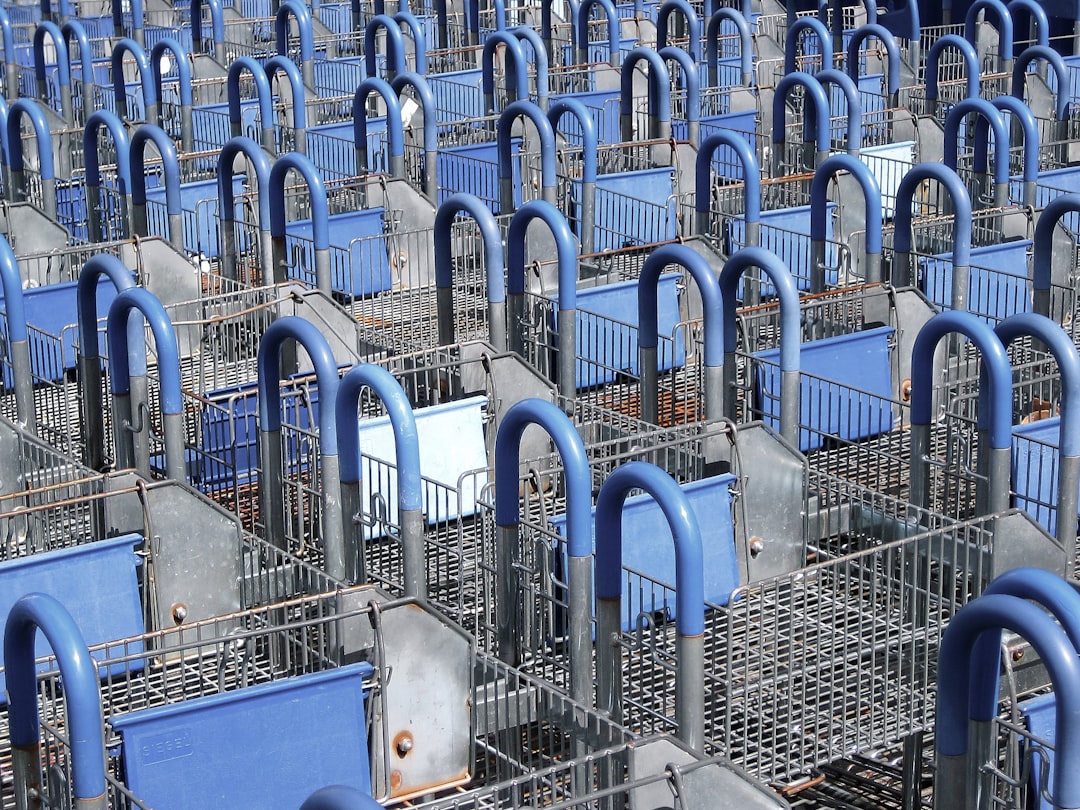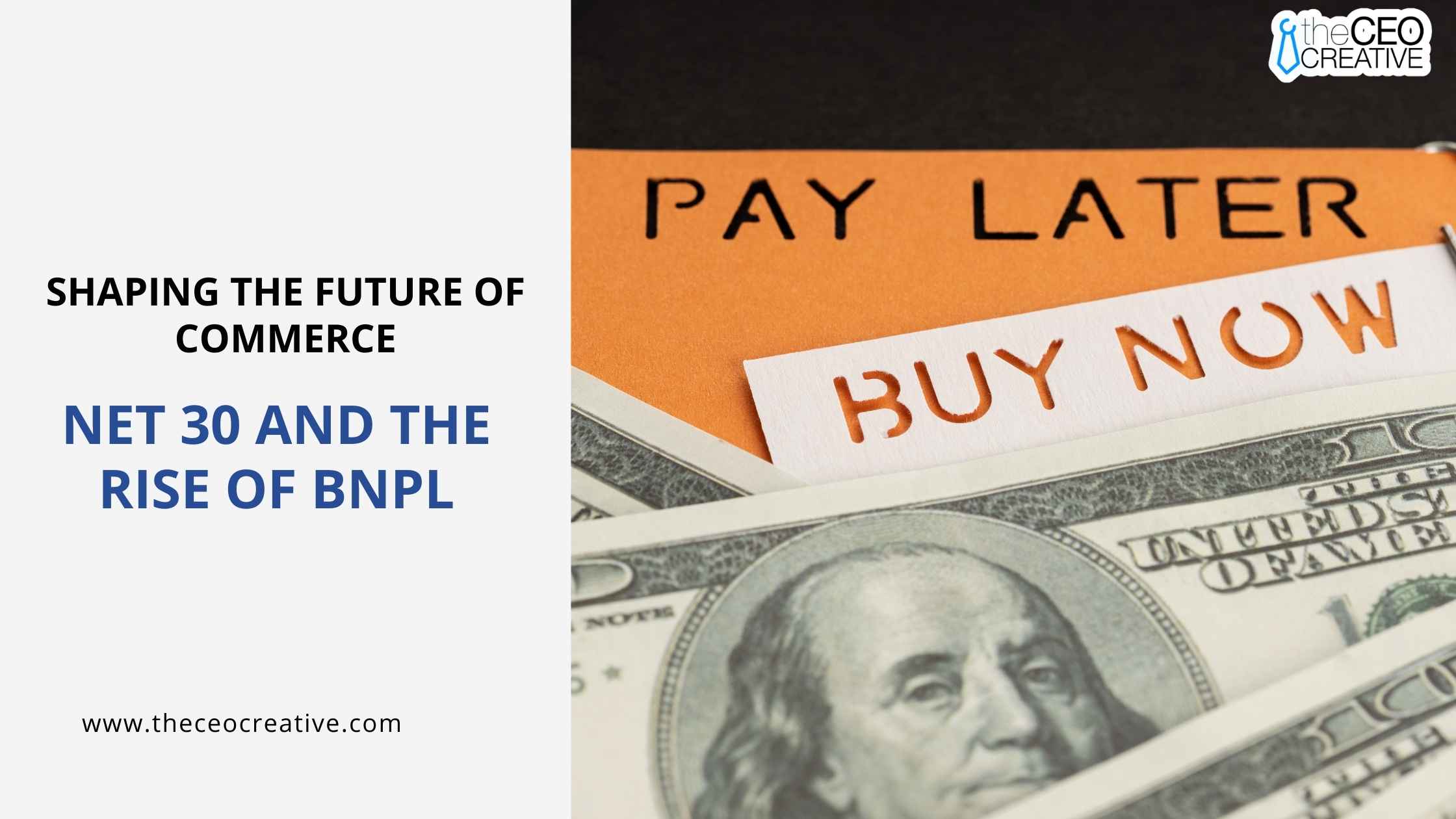Picture this: You’re cruising through an online store, tempted by that new gadget or must-have outfit, but your bank account says “Not today.” In the past, you might have reached for your credit card or waited for payday.
But now, there’s a modern twist—Buy Now, Pay Later (BNPL). With just a few clicks, your purchase is complete, and payments are split over time, often interest-free. It’s convenient, enticing, and reshaping our shopping behaviors.
This evolving “pay later” concept isn’t just for consumers. While BNPL solutions have grabbed the spotlight, the trusted Net 30 terms remain vital in business transactions.
Both payment methods offer delayed payment options; however, they target different audiences and operate under different dynamics. As they develop, these options are shaping business-to-business relations and the everyday consumer experience, forecasting a new era in commerce.
Understanding Net 30 And BNPL Solutions: The Business Basics
 Image courtesy: Unsplash
Image courtesy: Unsplash
Net 30 is a well-established term that dominates the B2B transaction space. The simplicity of this system is what has made it so prevalent. When a business delivers a product or service, Net 30 gives the buyer a 30-day window to settle the bill.
This deferred payment method is essentially a type of trade credit, allowing businesses the financial flexibility to obtain necessary supplies or services without having to make immediate payments. This option is crucial for managing cash flow and can enable businesses to handle larger orders more comfortably.
The Upside of Net 30 for Businesses
– Attracting Larger Clients: Offering a Net 30 payment structure can be a game-changer, particularly when dealing with substantial business clients. Big organizations often require such flexibility to align with their financial processes. By extending this convenience, businesses can attract valuable contracts and partnerships.
– Boosting Sales and Customer Loyalty: Net 30 is not just a payment term; it’s a strategic advantage. It acts as a selling point, providing clients the leeway to place substantial orders and incentivizing them to return.
– Competitive Advantage: In several industries, Net 30 is the expected norm. Failing to offer it might push potential clients toward competitors who do.
Navigating the Challenges of Net 30
– Cash Flow Concerns: The flip side of extending credit terms like Net 30 is the potential cash flow disruption, especially for businesses with slender liquidity margins. The waiting period for payments can lead to financial strain, making it hard to meet operational costs.
– Late Payments and Collection Efforts: Another significant challenge is dealing with customers who miss the 30-day payment deadline. Late payments can wreak havoc on cash flow and require additional resources to manage collections, often straining client relationships.
– Credit Risk: There’s also the risk that customers might not pay, leading to bad debts. This is a gamble that businesses take, which can sometimes result in financial losses.
Even with its challenges, Net 30 remains a critical part of the business world. It’s about balancing opportunities and risks. As payment methods evolve with newer options like BNPL solutions, businesses have more to consider when setting their payment strategies.
The Rise of Buy Now, Pay Later (BNPL): Retail Therapy, Reimagined
Buy Now, Pay Later, or BNPL, is the new kid on the block but quickly becoming everyone’s favorite. Imagine browsing through an online marketplace filled with enticing items. The price tag might cause a momentary pause, but BNPL steps in to sweeten the deal. By dividing the total amount into smaller, often interest-free installments, BNPL offers consumers a modern twist on traditional layaway plans, yet more accessible and convenient.
What’s Fueling the BNPL Boom?
– Convenience and Instant Gratification: In today’s fast-paced world, the consumer desire for immediate gratification is stronger than ever. BNPL satisfies this need allowing purchases on the spot without waiting for the next paycheck.
– Affordability and Budgeting: For those who might hesitate on a big purchase, the installment approach offered by BNPL makes budgeting easier, allowing people to handle purchases in bite-sized chunks.
– No Interest (Often): Many BNPL services provide interest-free installments, making them attractive for those wary of high-interest debt from credit cards.
– Accessibility: Unlike credit cards, BNPL is known for requiring less stringent credit checks, making it accessible for consumers with limited credit histories or lower scores.
BNPL: A Win for Consumers?
– Flexible Payment Options: BNPL caters to consumer preference for flexibility, allowing payment arrangements that align with their financial situations.
– Improved Cash Flow Management: By breaking down purchase costs, BNPL solutions help individuals maintain a steadier cash flow, avoiding the shock of a single large expense.
– No (or Low) Interest: The ability to avoid interest costs makes BNPL an appealing option for those keen to sidestep traditional credit card expenses.
– Increased Purchasing Power: BNPL solutions potentially empower consumers to proceed with purchases they might have postponed or turned down, enhancing their ability to seize timely deals and opportunities.
Potential Pitfalls of BNPL Payments
– Overspending and Impulse Buying: The effortless, delayed payment option could encourage impulsive purchases, leading consumers to spend beyond their means.
– Hidden Fees and Charges: Some BNPL services incorporate additional fees, such as late fees, which can accumulate quickly if terms are not clearly understood or adhered to.
– Impact on Credit Score: In some cases, missed BNPL payments can negatively affect credit scores if reported to credit bureaus.
– Debt Trap Potential: Without discipline, BNPL can become a debt trap as consumers manage multiple ongoing payment plans simultaneously.
BNPL has revolutionized the retail landscape by making shopping more flexible and accessible. However, the key is responsible usage. Consumers need to be well-versed in the terms and conditions to reap the benefits without falling prey to its potential drawbacks.
Net 30 vs. BNPL: A Tale of Two Payment Terms
 Image courtesy: Unsplash
Image courtesy: Unsplash
In the ever-evolving world of commerce, where the options seem endless and payment flexibility is king, two terms have become central in shaping our purchasing decisions: Net 30 and Buy Now, Pay Later (BNPL). Both payment methods are revolutionizing how we think about and manage our finances, but they do so in uniquely different ways.
Net 30 is an age-old term primarily found in the realm of Business-to-Business (B2B) transactions. In simple terms, it allows the buyer to receive goods or services and pay for them within 30 days. This system aids in cash flow management for businesses and allows for larger transactions between entities. It has long been a staple for industries dealing with bulk orders or ongoing supply chains.
On the other hand, BNPL is a more recent phenomenon that focuses on the individual consumer’s experience. It’s becoming increasingly common in online and retail purchases, offering a quick and often interest-free way to pay for goods over time. This flexibility appeals particularly to younger demographics who are wary of traditional credit systems.
While Net 30 tends to be associated with larger transactions, typically demanding credit checks to safeguard against default risks, BNPL is oriented towards smaller purchases and provides an accessible option for individuals who might not qualify for traditional credit.
Both methods have their pros and cons in terms of cash flow impact, interest involvement, and credit requirements, asking businesses and consumers to strategically decide what works best for them.
The Impact on Commerce: A Shifting Paradigm
The rise of BNPL alongside the enduring relevance of Net 30 is reshaping the landscape of commerce. These trends are not merely modifying how payments are made—they are influencing consumer behavior, business strategies, and fueling a wave of competition and innovation in the market.
Changing Consumer Behavior
Consumer expectations are shifting dramatically with the rise of BNPL. There’s a new norm where shoppers expect extended payment options beyond merely using a credit card. This expectation spans across many sectors, including retail, travel, health, and beyond. The convenience and flexibility of BNPL spur consumers to spend more freely, sometimes encouraging purchases they might typically defer.
However, the ease of deferred payments also comes with a cautionary tale of increased consumer spending, potentially leading to impulse buying. Merchants leveraging BNPL can gain significant customer loyalty and enhance brand preference, as consumers are more likely to choose brands that offer these flexible payments. Essentially, BNPL has become a tool not only for managing cash flow but also for enhancing the consumer experience and promoting customer retention.
Business Adaptation
Seizing the opportunities BNPL presents, many businesses are adapting their sales strategies. Offering BNPL solutions can enhance a business’s appeal by integrating seamlessly into the purchasing journey, allowing for flexibility in payments that attract and retain customers. As competition intensifies, companies are rethinking credit policies, encouraging early payment discounts, and blending traditional methods with innovative solutions to meet consumer demand.
Adapting to these changing payment landscapes isn’t just about offering new options; it’s about refining the entire purchasing experience. Companies embracing these changes are likely to see improved customer satisfaction and loyalty, which are crucial in today’s fast-paced competitive market.
Competition and Innovation
The introduction of BNPL is not just a reaction to changing consumer needs but also a driver of significant competition and innovation in the financial sector. The traditional dominance of credit cards is being challenged as consumers find attractive alternatives in BNPL’s transparent and often cheaper payment solutions.
The fintech industry is racing to keep up, proposing new technologies and efficiencies, leading to a surge in payment innovation. This competition is expanding financial inclusion by offering credit opportunities to those with minimal or low credit histories, ensuring more people can participate in economic growth.
The dance between established financial institutions and emerging BNPL providers ultimately fuels breakthroughs in payment technology, promising a future with even more diverse and inclusive payment solutions.
In conclusion, both Net 30 and BNPL solutions are fueling a shifting paradigm in commerce, reflecting a broader evolution in how we conceptualize and execute transactions.
They redefine consumer expectations, challenge businesses to adapt, and drive financial innovation. As these payment options continue to evolve, staying informed and adaptable will be key for businesses and consumers aiming to thrive in the dynamic landscape of modern commerce.
The Future of Commerce: Navigating the Uncharted Waters
 Image courtesy: Unsplash
Image courtesy: Unsplash
The payment world is transforming faster than a caterpillar turning into a butterfly. With new technologies sprouting up and changing what consumers expect, businesses are now cruising through uncharted waters. So, let’s pull out our crystal ball and make some predictions for Net 30 and BNPL (Buy Now, Pay Later)!
Predictions for Net 30
Enduring Relevance in B2B: Despite BNPL capturing consumer attention, Net 30 remains an old reliable in business-to-business (B2B) transactions. It’s the go-to for larger deals and those established business relationships, the kind you can rely on when the chips are down.
Adaptation and Hybrid Models: To keep up with the times, businesses might start jazzing up their Net 30 offerings. We’re talking more flexible payment terms or maybe even hybrid models that might blend early-payment discounts and dynamic discounting.
Technological Integration: As businesses go digital quicker than you can say “automation,” Net 30 terms could become more entwined with accounting software and digital payment systems. This evolution could smooth out the process, making it faster and more efficient like greased lightning!
BNPL’s Trajectory
Continued Growth and Expansion: BNPL is like a train with no brakes—it’s going places! Expect it to spread its wings into new markets, reaching industries such as travel, healthcare, and potentially education. Consumers love the flexibility, so it’s here to stay.
Increased Regulation: As with any wildly successful trend, regulatory eyes are taking a closer look at BNPL. It’s highly likely we’ll see new regulations to ensure consumers are protected, which means less chance of hidden fees sneaking up on them like a cat on the prowl.
Technological Advancements: BNPL won’t just coast on its current success. Providers are poised to innovate with tools like artificial intelligence and data analytics. They aim to create personalized payment plans and more accurate credit assessments, leading to a smoother experience for users.
The Convergence of Payment Methods
Hybrid Models: Picture this—a fusion of Net 30 and BNPL solutions. Such a hybrid might provide businesses and consumers with even greater choice and flexibility, the best of both worlds on a silver platter!
Integration and Partnerships: Imagine traditional financial institutions locking arms with BNPL providers. Such collaborations could lead to a more unified payment ecosystem where everything from loans to shopping is handled seamlessly.
The Role of Cryptocurrency and Blockchain: Don’t count out blockchain! As this technology becomes more accessible, it could revolutionize both Net 30 and BNPL. Not only speeding up payments but also doing it with increased security and transparency.
As businesses and consumers chart a course into this unpredictable future, they’re bound to discover new frontiers in commerce. Whether you’re a business aiming to streamline transactions or a consumer in search of flexibility, understanding the journey of Net 30 and BNPL helps you stay one step ahead. So, buckle up and enjoy the ride into the future of commerce!
Conclusion: Embracing the Evolution of Commerce
The transformation in payment methods is remarkably shaping the landscape of commerce today. From Net 30 terms, which have long supported businesses by fostering solid partnerships and facilitating significant transactions, to the rapidly growing Buy Now, Pay Later (BNPL) options capturing consumer interest with unmatched convenience and flexibility, the commerce sector is evolving.
Net 30 remains crucial for businesses due to its ability to support cash flow management and foster client relationships, despite challenges like credit risks and liquidity concerns.
On the flip side, BNPL’s rise in the consumer market addresses a modern desire for flexible spending, though it comes with risks like overspending and debt if used irresponsibly.
Future trends indicate that technology, coupled with changing consumer preferences, will continue to redefine payment landscapes. As companies and consumers adapt, understanding the unique benefits and challenges of both Net 30 and BNPL becomes essential. T
his knowledge empowers individuals and organizations to make informed financial decisions, promoting a vibrant and dynamic commercial environment. Embracing these changes with awareness and adaptability will be key to thriving in the future of commerce.






